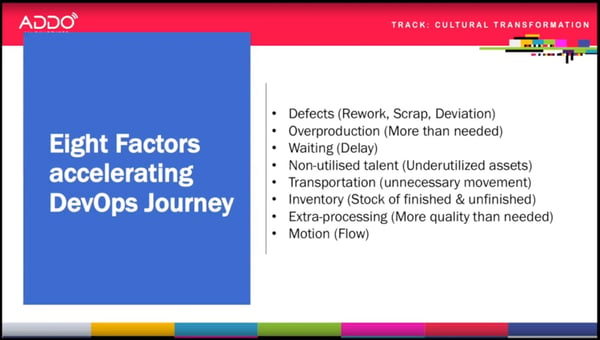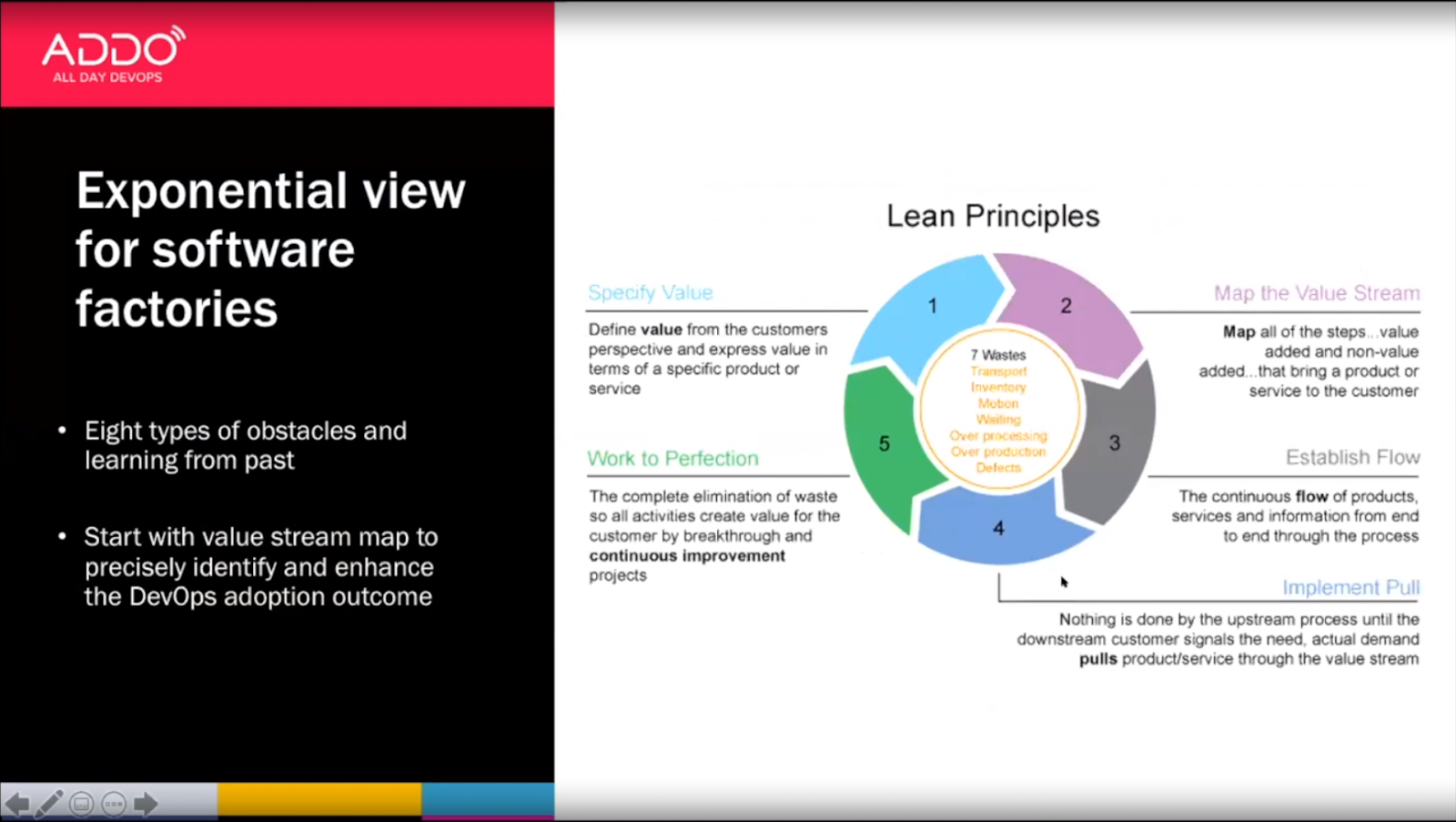DevOps is not a product, a framework, or a job title. It's a journey.
Garima Bajpai has been part of the DevOps community since 2014. In addition to being an industry speaker on digital twins, AI-Ops, and DevOps, she is a cofounder of the DevOps Community of Practice in Canada.
On All Day DevOps, she discusses the state of DevOps in 2020, the challenges and factors that accelerate DevOps transformation, and what the future has in store for DevOps. She also walks us through the product development journey and how DevOps can help.
Key Challenges of DevOps
Bajpai starts by sharing the challenges a company faces when adopting DevOps.

- Cultural change is the hardest part. If you are going to implement DevOps, it will require significant change in the ways operations teams work.
- Since DevOps doesn’t have any predefined implementation processes, practitioners need to adjust to a decentralized approach.
There is a general need for a global DevOps vocabulary. This brings us to the three core concepts you need to understand:
- Continuous integration
- Continuous delivery
- Continuous deployment
Sweet Spot for DevOps Adoption
There are two primary adopters driving the DevOps movement that help resolve organizational siloing. One is focused on mitigating operation-centric slowness and waste. The second is focused on development-centric improvement.
Experimenting can enhance the ease of adopting the next wave of DevOps. And the key to maintaining consistency in every release lies in mass production, inventory reusability, and focusing on customer value.
The sweet spot is where the boundaries between teams are porous enough for complete collaboration.
Factors Accelerating the DevOps Journey
Bajpai discusses the factors that are accelerating the DevOps journey. Here's a partial list:
- The removal of defects.
- A focus on quality over quantity.
- A reduction of waiting time.
- Resources that help ops and dev teams understand each other’s perspectives.

Next Steps
The next step is mostly about building context. DevOps adoption is difficult for most companies. And DevOps, agile, and ITIL face strong competition from SRE. Even DevOps topologies in use today face huge challenges.
So what can we do in 2021 to address these challenges and accelerate the adoption of DevOps?

Bajpai focuses on three main approaches.
- Specifying Value: Thinking from the customer’s point of view, defining more value, and expressing it in your service or product.
- Value Stream Mapping: After identifying the values, deciding on steps required to implement those values.
- Implementing Pull Approach: Thinking outside the box and defining a unified approach for developing products.
Focusing on Innovation
The products and features we develop have a shorter life span and are more diverse now. We therefore have to be careful about which features we produce. And we need to explore ways to become more data-driven and build new models of AI-human collaboration.
The Product Development Journey
Decoding value is not an easy job. Bajpai shares her experiences discussing product development with startups and entrepreneurs. The problem lies in three stages.
Designing
People have difficulty expressing ideas in a sensible way while keeping the return on investment in mind.
Development
Maintaining consistency of product value can be difficult. This is especially true if you have a large and diverse team. Conflict may arise among team members regarding the planning of release strategies.
Operations
Operations teams often face problems during a release while decoding the product's value radar. What is the solution? Welcome innovative ideas and follow a lean approach to development.

Approaches and Metrics to Enhance DevOps in Your Organization
Continuous Product-Oriented Practice
Bajpai discusses continuous product-oriented practice and aims to identify value and build a value stream. They can help you by answering a few questions:
- Is your idea good enough?
- How fast can you deliver? (This is where DevOps implementation comes in).
Using some mechanisms like value-based pricing, data storytelling, and product canvas along with some data can help you make better decisions and create a continuous pipeline of features.
Value Design Metrics
Value design metrics help you by doing the following:
- Encouraging you not to focus too much on any specific product value and to instead maintain a balanced value delivery to the target user.
- Suggesting ways to reduce the cost of each value point.
Along with these two, Bajpai advocates gamification since it integrates with machine learning and clarifies things in a fun way.

Wrapping It Up
Presently we are moving toward continuous innovation, and soon we will see a lot of acceleration in AI-native product features. So get ready for the next wave of DevOps practices. Bajpai concludes by encouraging the audience to be part of the DevOps community.



.png?width=610&name=J1_ModernCybersecurityBook_Promo%201200x628%20v2@2x%20(1).png)



